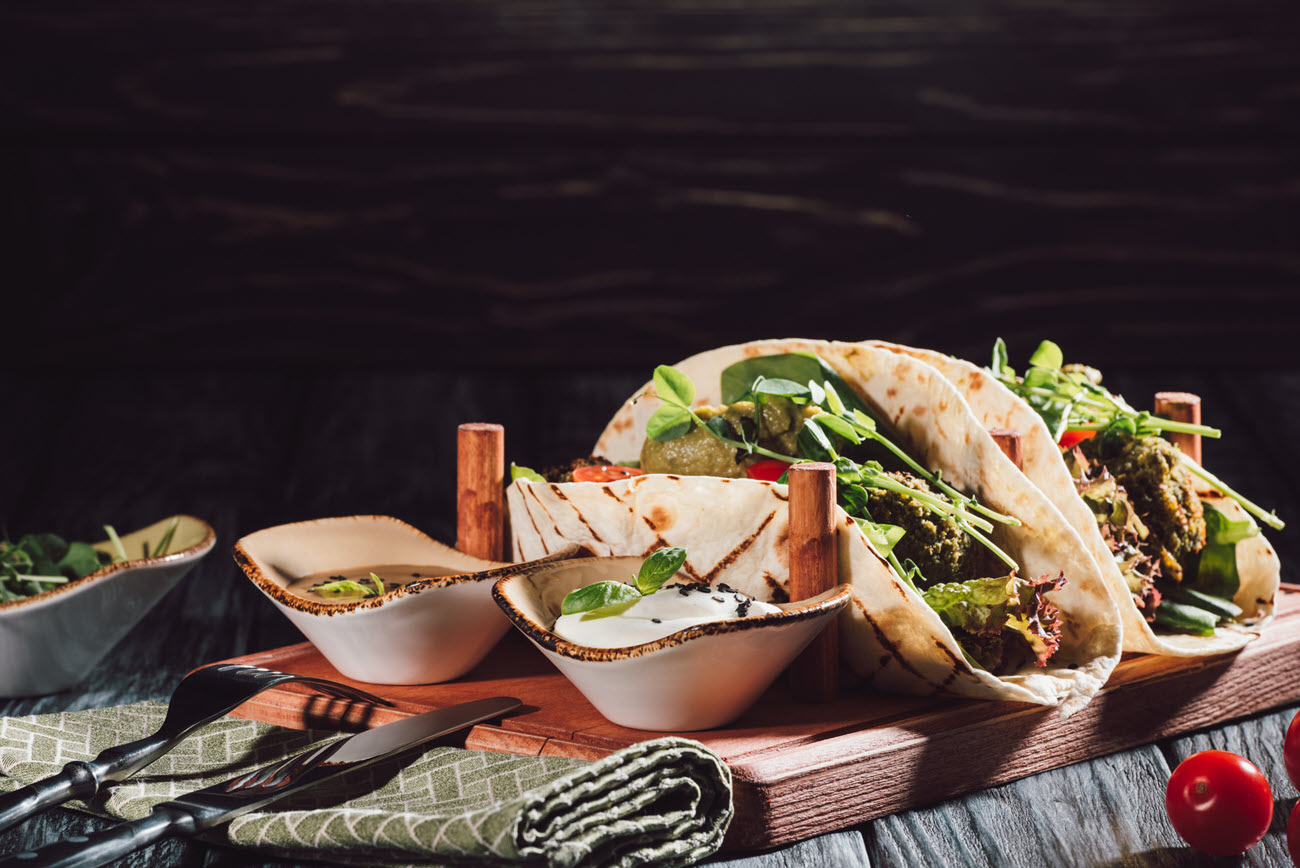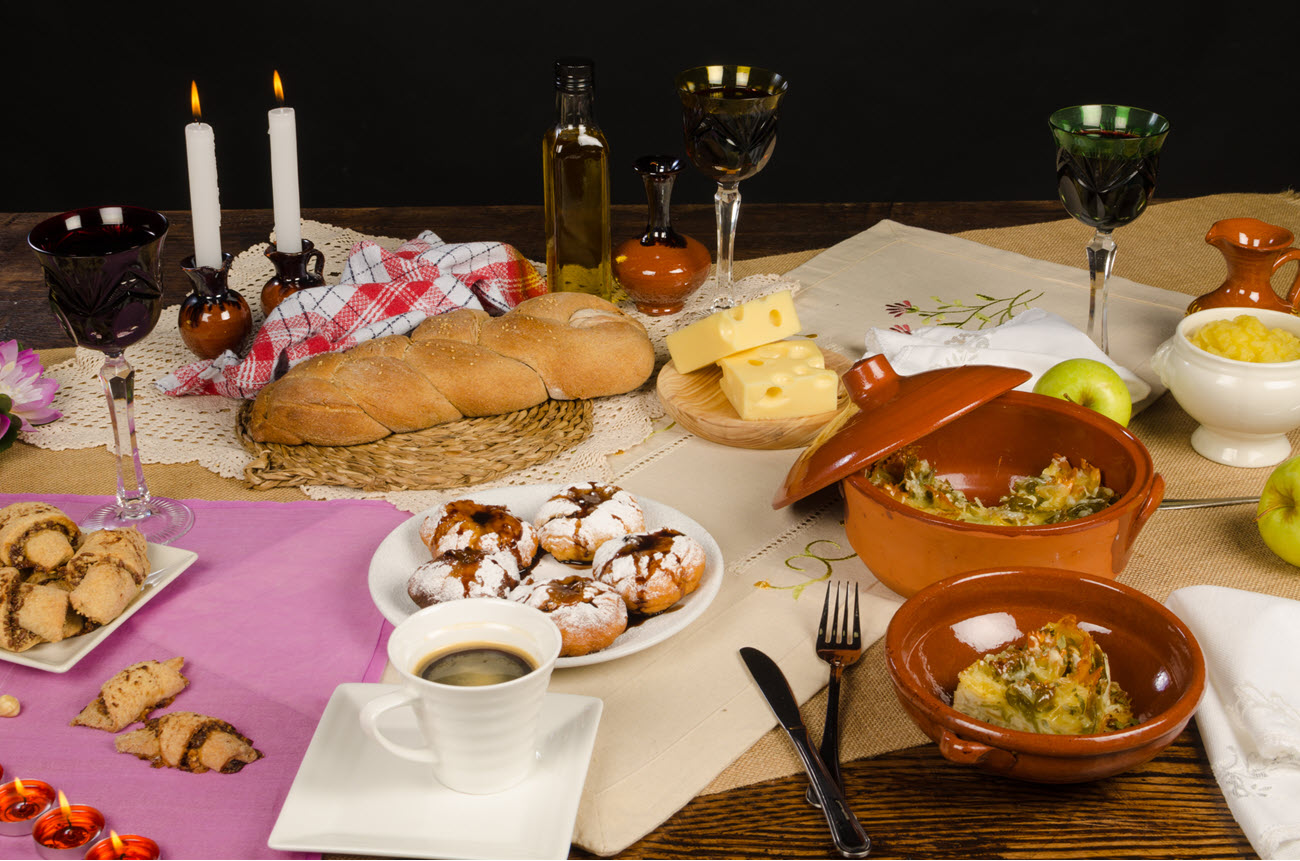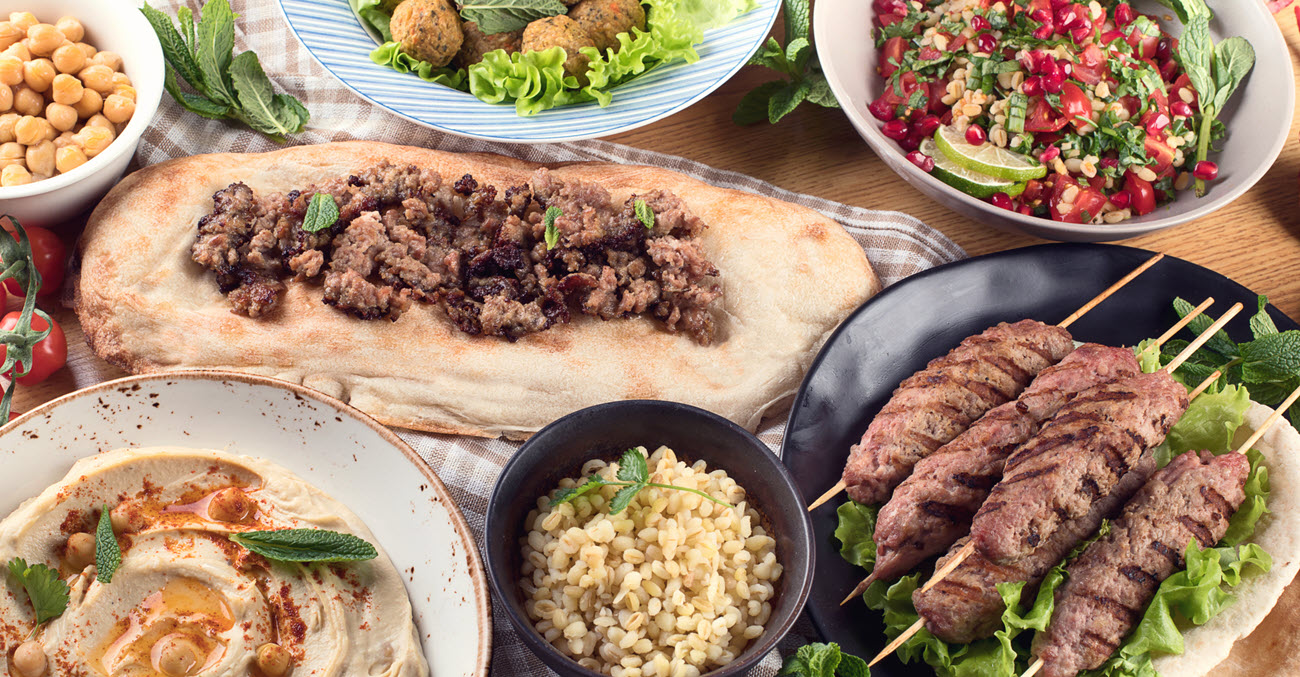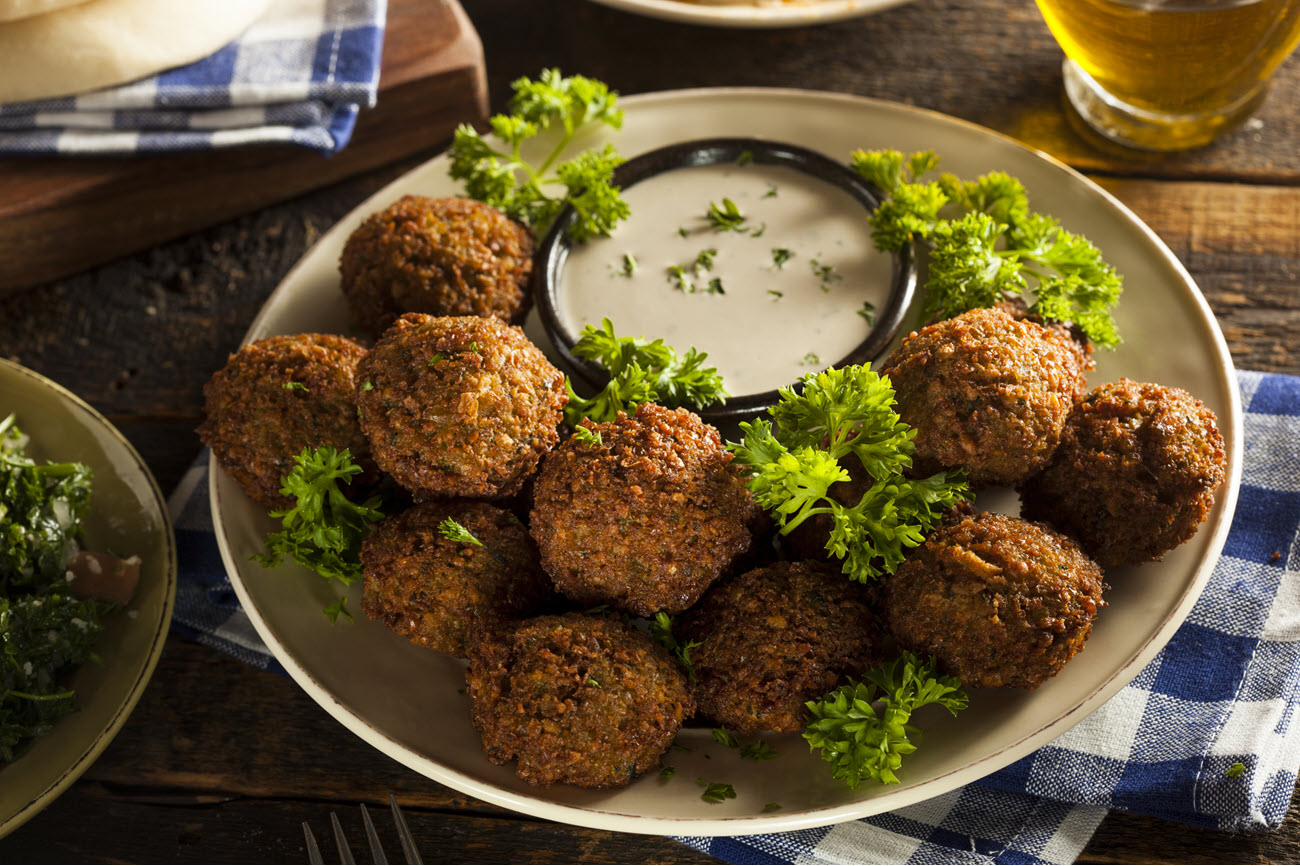Understanding the Difference between Kosher and Halal Foods

Both Islamic and Jewish cultures have strict laws governing what they can and cannot eat. The most famous of these is their mutual aversion to pork. The two religious cultures share this and many other dietary rules in common. Yet their many small differences can cause them to diverge in profound ways.
For the observant Jewish or Muslim gourmand, this leaves questions at the table. Is food in the kosher section okay for Muslims to eat? Can Jewish diners try out the new halal place down the street? Can restaurants cater to both markets?
The Two Principles
Both Judaism and Islam are Abrahamic faiths, borne from the Middle East. They are united by their beliefs in God as revealed in the Hebrew Bible. Their dietary laws are part of their intricate code of conduct as believers. Following these rules are a crucial part of devotion to the Divine. Devoted Jewish and Muslim communities hold dietary rules as essential to their faith.
Religious dietary laws shaped the cuisines of both communities for thousands of years. For centuries, adherents have pushed culinary boundaries yet remain faithful to these rules. Both faiths have also faced the challenge brought by a world of processed food. In a way, they have become extensions of their cultural identity.
Kosher

In Judaism, kosher refers to food permissible for Jewish people to eat. The word itself means “appropriate” in the Hebrew language. The rules that govern kosher, Kashrut, derive from the Hebrew Bible and the Talmud. For the faithful Jewish observant, keeping kosher turns every meal into an act of worship. It is also an affirmation of ethnic and religious identity.
The laws of kashrut forbid consumption of the following:
- Unclean (treif) animals
- Unclean and prohibited parts from kosher animals
- Blood
- Meat and dairy within the same meal
Kashrut also divides permitted foods into three groups. In North America, they are often known by their names in the Yiddish language:
- Meat (fleischig): This encompasses any product derived from the body of a kosher animal. Non-microbial rennet is part of this category.
- Dairy (milchig): This comprises milk and its derivatives. For the purposes of simplicity, margarine flavored with whey counts as dairy.
- Pareve: This is a broad category of kosher foodstuffs that can be eaten with either meat or dairy. They include eggs, fruits, grains, plant byproducts, and permitted seafood.
Pareve ingredients take on the category of whatever they are cooked with. Vegetables cooked with meat, for instance, count as a meat dish. Fish is complicated. It cannot be cooked with milk or dairy. Dishes made with fish, however, can be served alongside either.
Jewish customs also place additional restrictions during the feast of Passover. Grain and legume products are forbidden, except for unleavened bread. Cultural differences between various Jewish communities abound. Sephardic Jewish communities, for instance, eat lamb during the Passover feast. Ashkenazi Jewish ones do not.
Forbidden Animals
Kashrut forbids the consumption of the following types of animal:
- Non-ruminant ungulates (pigs, camels, donkeys, horses)
- Rodents and hyraxes
- Arthropods (except locusts)
- Predatory animals
- Reptiles and amphibians
- Predatory birds
- Fish without scales
- Shellfish
- Carrion
Animal products from unspecified or non-kosher sources cannot be used for kosher food.
Rabbinical Guidelines
The guidelines of kashrut govern many aspects of food preparation. Jewish butchers must slaughter animals according to the prescribed methods. Two sets of utensils and appliances are present in kosher kitchens to ensure the separation of milk and dairy.
These extend to wine and processed food. Commercial kitchens, food production facilities, and wineries all need rabbinical supervision. Only wineries with rabbinical guidance can produce kosher wine, for instance. Likewise, certain brands of processed food often emerge specifically to cater to Jewish markets.
Davar Hadash
A few rabbinical authorities apply the label davar hadash to processed food additives. These chemicals are so far removed from their source that they cannot be the same substance. Thus, such an item can be pareve, even if it comes from something that was not.
To count, an additive must undergo profound molecular changes during manufacture. Gelatin from kosher animals is usually seen as davar hadash. The production of gelatin renders no trace of meat in the final product.
Halal

In Arabic, halal means “permitted.” The term is used in a broad sense to refer to items and behaviors that Muslims consider lawful. Anything that isn’t halal is haram, “forbidden.” For devout Muslims, to follow halal is to live by the commandments of God. Halal encompasses many consumer goods but is often used in the context of food. Food deemed halal is permitted for Muslims to eat.
In Islam, the following things are haram for consumption:
- Unclean animals
- Unclean parts of halal animals
- Blood
- Alcohol and other intoxicating substances
Items can also become haram through contamination. Halal food items must be processed separately to maintain their integrity. Products that do not come from animals or are non-intoxicating are always halal. These would include vegetables, fruits, and other plant products
Anything that contains high concentrations of alcohol in suspension are haram. Flavorings such as vanilla extract, are haram because of the presence of alcohol in the mixture. Alternate sources of vanilla flavoring, including vanilla bean, are halal.
Processed food marketed for Muslims must be accredited by a religious organization. This is to ensure that no haram substances were in contact with the ingredients at any point of manufacture.
Haram Animals
The following types of animals are forbidden from consumption within Islam:
- Pigs
- Donkeys
- Carnivorous mammals
- Reptiles and amphibians
- Predatory birds
- Insects (except locusts)
- Carrion
Halal animals not killed in the prescribed manner are also haram. The status of animals might not be universally accepted. Many jurists accept aquatic shellfish as halal, but there are those who disagree.
Halal Meat Preparation
Halal is also involved in preparing meat products. Islamic teaching values the lives of all God’s creatures. Muslim butchers must follow a specific process to prevent needless suffering during slaughter. The butcher must offer the life of the animal only to God.
Thus, Muslims are not permitted to consume meat offered to other deities or by non-Muslims. An exception is made for animals slaughtered by Christian or Jewish butchers. In Islam, these cultures are among the “people of the Book,” followers of the same God. Any prayer they offer before slaughter is valid.
Similarities and Differences

Islamic and Jewish dietary laws enjoy a host of parallels. They share the ban on the consumption of pork and blood. They also put a great focus on maintaining cleanliness to ensure the purity of their food. They take great steps to prevent cross-contamination by forbidden substances. Their rules have also been applied to what types of processed food their adherents can buy.
In general, kosher guidelines on food preparation are much more intensive than those for halal. These are especially strict in maintaining the distinction between milk and dairy.
The Slaughter Process
One can find the biggest similarities and contrasts in their approach to butchery. Jewish and Islamic slaughter both involve keeping the animal isolated. The abattoir must follow their standards for cleanliness. Both traditions mention that animals must be alive and healthy before slaughter. The butcher must make a quick, precise incision on the neck of the animal to knock it unconscious. The cut is angled to drain as much of the animal’s blood as possible.
In both Jewish and Islamic traditions, inspectors examine the animal after slaughter to ensure the health of the animal. After that, the meat cuts are soaked to remove the remaining blood before it is sold to the market.
The practices, however, have major differences in their approach.
| Kosher Shechita | Halal Dhabihah |
|---|---|
| The butcher (shochet) must be specially trained for the purpose. | Any able-bodied devout Muslim can take the role of butcher (dhabih) |
| Animals cannot be stunned before slaughter at all. | The animals are sometimes stunned before they are killed. |
| The butcher is required to make one blessing when doing a day’s worth of work. | The butcher must say a short prayer to God each time before taking the life of each animal. |
| The knife (chalaf) used is straight | The knife used can be curved. |
| Inspectors examine the organs of the animal to identify its health at the time of slaughter. | Inspectors examine the entire animal thoroughly before approval. |
The sciatic nerve is among the organs not considered kosher. Removing this is not cost-effective, so the hindquarters are simply sold to non-Jewish buyers. No such restriction exists in Islam.
Kitchen Arrangements
Muslim and Jewish kitchens must prevent cross-contamination that renders food unacceptable. Neither kitchen should be used to process pork and other forbidden animals. Utensils and equipment should likewise be exposed to anything forbidden. Halal kitchens stop there. Kosher kitchens need both rabbinical supervision and separate areas for meat and dairy.
Across Markets
What does this mean for Muslim and Jewish consumers? Summing up, Muslim buyers can consume kosher products. Jewish buyers cannot do likewise with halal.
For many Muslim buyers, non-alcoholic kosher food products are considered halal. This can be a convenient thing in areas with smaller Muslim populations. The ability to buy kosher also means that Muslim consumers can buy a larger array of products.
The opposite does not apply to Jewish shoppers and diners. The rules governing kosher meat mean that halal meat cannot be kosher. Many animals that are halal, including horse and shellfish, are likewise not kosher. Moreover, halal does not have a prohibition on meat and dairy. Cross-contamination between the two products remain a possibility in halal kitchens.
Mutual Accreditation
Kosher restaurants are halal for many Muslim diners. Stringent dietary laws mean that kosher restaurants contain few haram ingredients. The opposite is not always true. A restaurant must gain kosher certification to be both kosher and halal. In practice, this usually leans heavier on following the tighter Jewish dietary regulations.
There are attempts to bridge the gap between the two culinary guidelines. Attempts at inter-faith meat aim to meet the demands of both kosher and halal. This concept has yet to experience widespread acceptance from either community.
A Plant-Based Option

Today, plant-based diets are making a comeback. There are many health and wellness reasons for people to consider a diet largely of plants. People from Jewish and Muslim communities have followed suit. Many individuals have adapted kosher- and halal-compliant vegetarian or vegan diets.
Pareve and Halal
In the Mediterranean, many staples in both Muslim and Jewish tables of the period were pareve. This includes falafels and hummus, which are made of chickpeas, salads, and flatbreads. All pareve foods would count as halal regardless.
Although pareve products might count as kosher and halal in theory, they may not always be so in practice. vegetables not prepared according to kosher practices might still have insects. Some adherents believe that kosher food should only be prepared by observant Jewish people.
Vegetarian options are one way for Jewish and Muslim diners to eat without worry. Plant-based dishes are pareve. If no insects were found within them, they count as kosher. Vegetarian and vegan food options are also halal, as no risk of contamination is present.
On Processed Food
Manufacturers have much to consider to ensure their products are halal or kosher. They must adhere to the strict guidelines set by faith-based regulatory standards. They must make sure that their ingredients come from acceptable or compliant sources. Facilities should also follow religious guidelines for cleanliness. They should also take steps to prevent cross-contamination.
It is possible to market products for both communities. In practice, this usually requires following mainly kosher guidelines for production. Alcohol products must be avoided to meet halal guidelines.
Most products with kosher and halal designations often avoid the following ingredients:
- Animal oils
- Marine oils
- Carrion
- Alcohol and grape derivatives (except for fresh grapes)
- Vanilla extract
- Chocolate powders
- Dairy products and derivatives
Mutual Markets
Artificial flavors have opened many avenues for halal and kosher food products. Today, a wide array of processed food is available to both kosher and halal communities. A few of these products mimic the flavor profile of otherwise haram or traif items like bacon.
Dietary restrictions have often led to the development of substitutions. Demand from the U.S. Jewish market, for instance, led to the development of non-dairy dessert bars. These exploded in popularity in the mainstream markets.
Today, many food products have crosses demographic lines. Pareve dessert products for Jewish markets are also popular with vegans. Toppings meant as kosher substitutes, likewise, became a hit with Muslims. This has also happened in reverse. Jewish diners have adopted vegan milk options.
Find A Local Culinary School With Open Eligibility Today!
International Culinary Training
- International Schools
- Australia
- Canada
- France
- India
- Italy
- Japan
- Korea
- Lebanon
- Mexico
- Netherlands
- New Zealand
- Peru
- Puerto Rico
- Singapore
- Spain
- Switzerland
- Thailand
- United Kingdom
Culinary Training
Top Schools
- Culinary Arts Schools
- Le Cordon Bleu
- The Art Institutes
- Kitchen Academy
- Johnson and Wales
- French Culinary Institute
- New England Culinary Institute
Majors
- Culinary Majors
- Culinary Arts
- Baking & Pastry Arts
- Food Prep/Prof. Cooking
- Hotel & Restaurant Management
- Culinary Arts Management
- Wine, Spirits & Beverage Management
